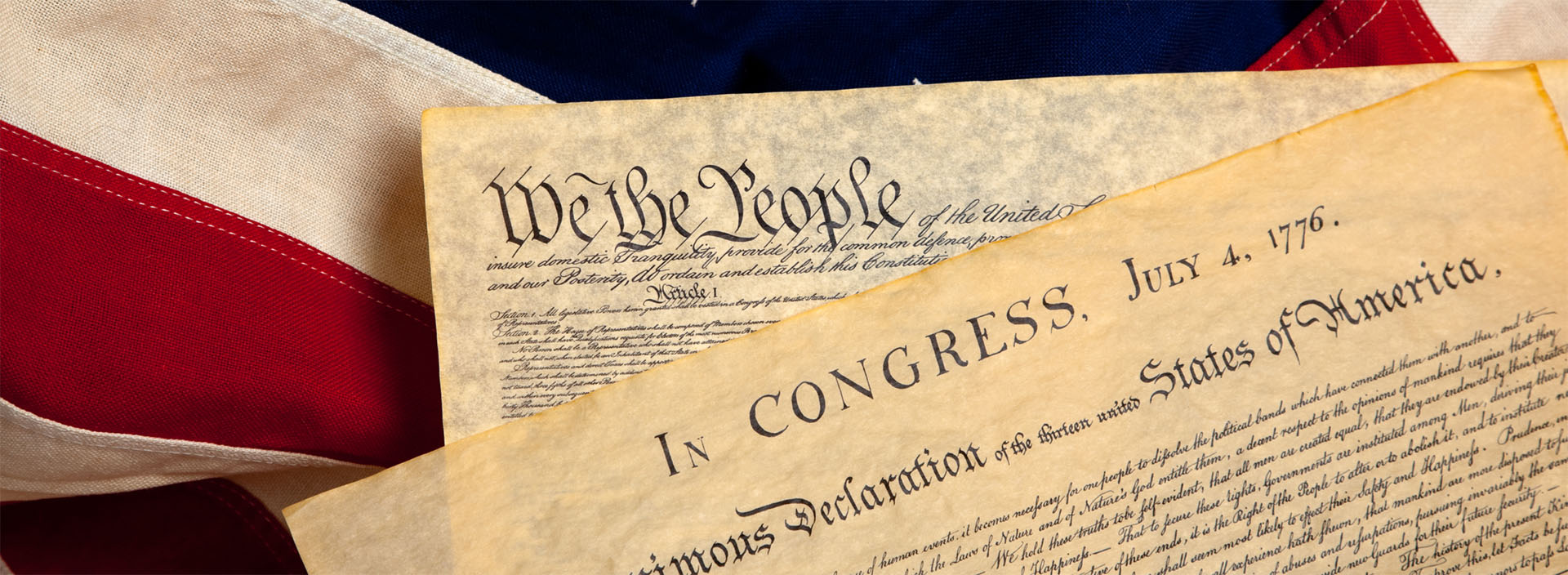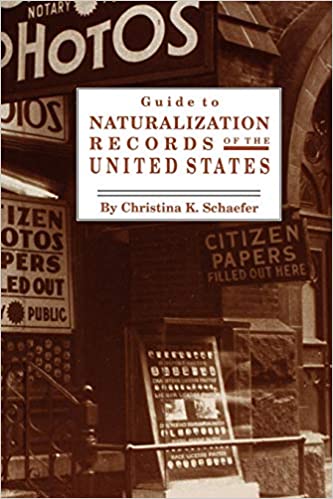
U.S. Naturalization History
Christina K. Schaefer’s magnificent reference, Guide to Naturalization Records in the United States, is a complete accounting of the location of U.S. naturalization records. Since the vast majority of original records are retained by local courts, the book provides a state-by-state and county-by-county inventory of naturalization records for all 50 states, U.S. territories, and Native American records.
The volume’s Introductory chapter provides a splendid overview of American naturalization. It describes the process, the various kinds of surviving records, how wars have influenced the naturalization process, other records such as voter registration and military records that can point to naturalization, the impact of prejudice upon naturalization, and much more. Ms. Schaefer also includes a brief history of naturalization in America, a portion of which follows below:
History of Naturalization in the United States
Naturalizations in the colonial period were infrequent as the majority of the early colonists were British subjects. English law forbade aliens from holding land. Europeans that were not considered British citizens wanted the right to acquire, convey, and inherit real estate. This was the main reason that individuals changed their allegiance to a new European country.
Oaths of allegiance were sworn to the British Crown simply by signing a list. An example of such records can be found in Our Early Citizens: Names of Those Taking the Oath of Allegiance from 1715 to 1773, by Lyle Frederick Bellinger (Washington, DC: Library of Congress, 1972, film 0889468).
Another record of early naturalization is Naturalization of Foreign Protestants in the American and West Indian Colonies . . . by Montague S. Giuseppi (1921. Reprint. Baltimore: Genealogical Publishing Co., 1964, film 0908978). These records also include “persons professing the Jewish religion.” This includes the localities of Jamaica, Maryland, Virginia, South Carolina, New York, and Pennsylvania, and contains all the returns sent from the colonies to the Lords Commissioners for Trade and Plantations. The original records are at the Public Record Office, London, England.
Letters of denization were letters patent from the King, and — until 1700 — by colonial governors. In 1776 all free white male residents of the colonies who were not British citizens were naturalized in toto by the Continental Congress. British subjects in the colonies were automatically considered citizens of the new republic. In 1790 this was extended to indentured servants who were residents during the Revolution.
Dates of Important Naturalization Laws
There have been many laws affecting naturalization over the years, and the requirements have varied from a simple oath of allegiance to an eight year residency. Important laws affecting the process of becoming a U.S. citizen:
1790. Citizenship required a two year residency in the U.S. and one year in the state, to be of good character, and to be performed in a court of record (l Stat. 103 1).
1795. Additional requirements were added of a three year residency to file a declaration of intention, a five year residency requirement (with one year in state of residence) to file final papers, and required renunciation of titles of nobility and foreign allegiance (1 Stat. 414 l). This act provided derivative citizenship for wives and minor children.
1798. Additional requirements stated that a copy of the return was to be sent to the Secretary of State, and the residency requirement was increased to fourteen years (l Stat. 570). This was repealed in 1802 (2 Stat. 153).
1804. Widows and children of an alien who died before filing his final papers were granted citizenship.
1824. The residency time between filing a declaration and final papers was shortened to two years (4 Stat. 69 2).
1855. An alien female who married a U.S. citizen was automatically naturalized (10 Stat. 604 2). This was repealed in 1922.
1862. Aliens over twenty-one who performed military service in the Army could become citizens after one year’s residence (12 Stat. 597 21
1868. African Americans became citizens by passage of the Fourteenth Amendment.
1872. Alien seamen serving three years on a U.S. merchant vessel could be naturalized without fulfilling a residency requirement (17 Stat. 268 2).
1882. Chinese were excluded from becoming citizens (22 Stat. 58). This was repealed in 1943 (57 Stat. 600).
1891. The Office of Immigration was established. Polygamists, and those convicted of certain crimes or who carried certain diseases were excluded from citizenship (26 Stat. 1084).
1894. Aliens serving in the Navy or Marine Corps could be naturalized under the same conditions as the 1862 law (28 Stat. 123 l).
1906. The Bureau of Immigration and Naturalization was established. Alien registration was required. Residency requirements were changed to two years to file intent, and five years for final papers. Derivative citizen ship was still practiced (34 Stat. 596 3).
1907, A female U.S. citizen who married an alien lost her U.S. citizenship and took on the nationality of her husband (34 Stat. 1228 3). This was repealed in 1922, but citizenship was not restored until 1936.
1918, Aliens serving in U.S. forces during World War I could be naturalized without any residency requirement (40 Stat. 542 l).
Continued . . .
Recent Blog Posts




